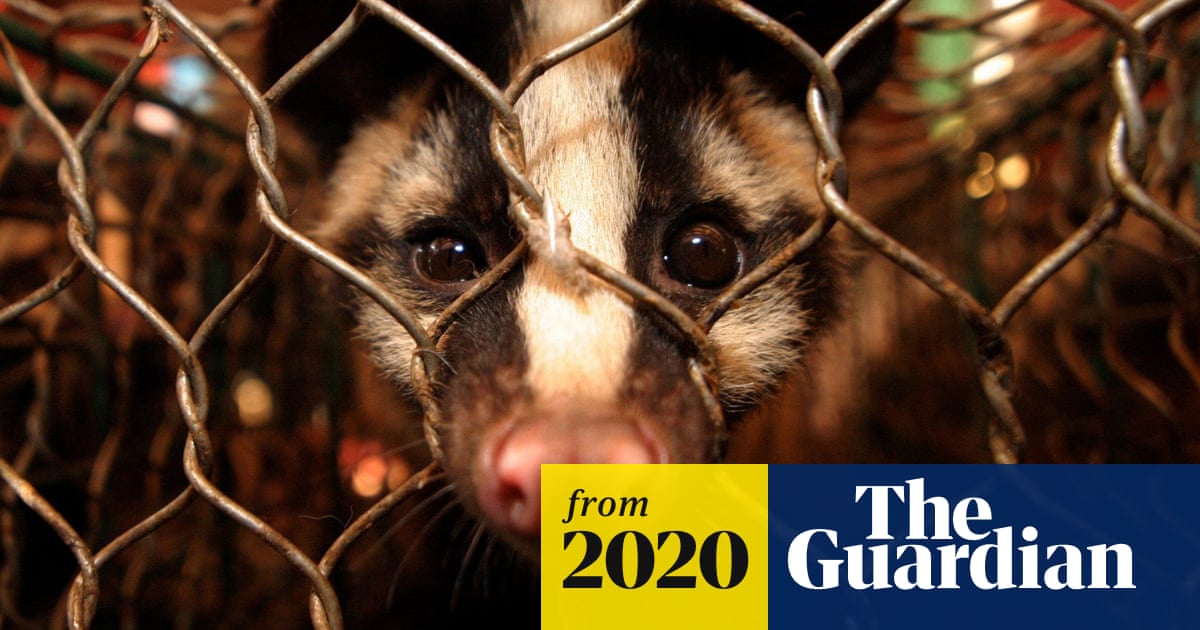The onset of Covid-19 has made experts urgently concerned about the risk of transmitting the disease from livestock to humans. Examine the major outbreaks of the last two centuries.
“Pandemic most often begins with the transmission of animal microbes to humans,” biologist Nathan Wolfe wrote in an introduction to The Viral Storm. This year was a manifestation of that fact.
This summer, months after the Covid-19 exploded to the world, the United Nations released a report detailing its relationship with zoonotic diseases. Wildlife, and increased proximity to wildlife, are the most common sources, but domestic animals are not only the original source, but also the source of infection or the host of bridging, from wild to human. It causes infection. “Not surprisingly, the majority of animals involved in historic zoonosis or current zoonosis are livestock (livestock, domesticated wildlife and pets) and have high contact rates. So it’s logical. “
Here we look at the major outbreaks that have been associated with industrial agriculture over the last 170 years.
Bovine tuberculosis
When first detected: Cattle-to-human transmission was established in the late 19th and early 20th centuries.
Infection method: It can be transmitted from bacteria, milk of infected animals. Coughing and spitting back and forth between people
Region: Global
Number of Affected People and Animals: Mycobacterium bovis (M. bovis) is part of the tuberculosis family, the leading cause of death worldwide from a single infectious pathogen. In 2018, about 1.5 million people died from tuberculosis, but about 143,000 cases of bovine tuberculosis-related tuberculosis. Bovine tuberculosis continues to be prevalent among cattle around the world, and cattle found with this disease must be slaughtered.
Milk provides millions of important fats and calcium, and dairy farms in the city center serve the world’s still developing urban population. Variants of M. tuberculosis had been identified by the 1880s, but in the years that followed, scientists disagreed whether the morphology found in cattle could be transmitted to humans. On the other hand, by drinking milk carrying Mycobacterium bovis, hundreds of thousands of people were infected with tuberculosis with the characteristic symptoms of coughing and blood in sputum.
Between 1912 and 1937, 65,000 people died in England and Wales alone.
In 1900, 10% of the deaths from tuberculosis were due to bovine tuberculosis. As there was growing consensus that bovine tuberculosis could actually infect humans, there was a growing desire to force pasteurization (heating) of milk, which became mandatory in New York City in 1910. In other parts of the world, it was much slower to catch up.

A sickly young woman sits hiding on the balcony. Death (a ghostly skeleton holding a sickle and an hourglass) stands next to her. Represents tuberculosis. Watercolor painting by R. Cooper
Q fever
When first detected: First identified in humans in the 1930s
Transmission method: Bacteria, aerial transmission
Region: The Netherlands has experienced the largest infection ever. Q fever is seen worldwide and is commonly reported in France and Australia
Number of affected people and animals: By 2016, 74 people had died from the disease in the Netherlands after the outbreak began in 2007, with an estimated 50,000 infected. The Dutch government has disposed of more than 50,000 dairy goats on 55 farms to curb the spread of the disease.
Dr. Edward Holbrook tentatively named Q fever in 1937 when he was asked to investigate a mysterious illness that plagued a handful of slaughterhouse workers and dairy farmers in Queensland, Australia.
His report concluded that “some animals may have a reservoir of infection,” but said attempts to find that reservoir had failed so far. In 2007, there was a significant outbreak in a densely populated area of the Netherlands with human and goat farms.
The epidemic followed the rapid growth of the Dutch goat dairy population, infecting more than 4,000 people. An estimated 2% of infected individuals were reported to develop chronic Q fever months to years after symptomatic or asymptomatic infections.

Vero cell dry fracture exposing the contents of a growing vacuole by Coxiella Bernetti
Bovine spongiform encephalopathy (BSE) (mad cow disease)
First detected: First identified in cattle in 1985. In 1996 scientists associated it with the human variant Creutzfeldt-Jakob disease.
Infection method: Consumption of infected meat
Region: United Kingdom. Occasionally appears in other countries
Number of affected people and animals: In the UK, 178 people have died from the disease in the last few decades. Millions of cows have been disposed of
One of the biggest public health crises of the century began in the 1970s when BSE, a neuropathy caused by an abnormal infectious substance called prions, began to appear in cattle. The main cause has been identified as infected cattle or animal feed containing rendered meat-and-bone meal (MBM). It was confirmed that more than 100,000 cattle were infected. The use of MBM was banned in 1988, but as the disease progressed, scientists began to associate it with a rare disease called Creutzfeldt-Jakob disease (CJD). The version linked to BSE was named Variant CJD.
It can appear years after eating infected meat, causing many painful symptoms and often fatal.
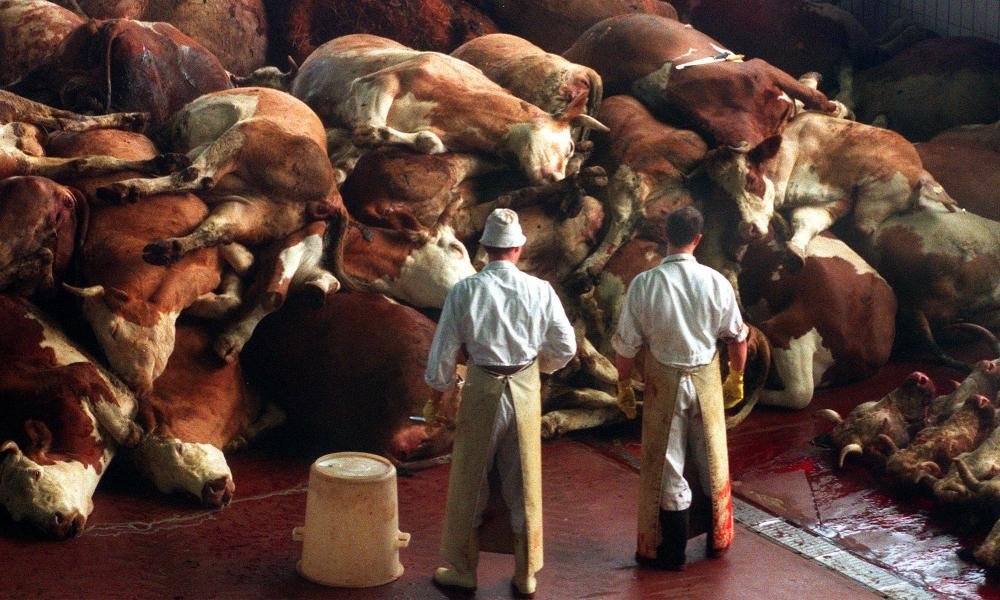
On Friday, March 21, 1997, a butcher stands in front of a pile of dead cows at a carcass-destroying facility in Oberding near Munich. Bavaria has begun slaughter of imported cattle to prevent the outbreak of mad cow disease. The bovine brain was tested for bovine spongiform encephalopathy (BSE).
H5N1 bird flu
When first detected: First detected in humans in 1997
Infection method: Direct or indirect contact in a polluted environment such as infected live or dead poultry, or a live bird market. Infected birds spread bird flu through saliva, mucous membranes and feces.
Region: First case of human transmission in Hong Kong. The disease is currently prevalent in poultry populations in Bangladesh, China, Egypt, India, Indonesia and Vietnam.
Number of Affected People and Animals: H5N1 reported more than 800 cases between 2003 and 2019, killing 400 and continuing to infect and die hundreds.
Bird flu or “bird flu” occurs naturally throughout the wild bird population, but until the 1990s, few suspected it could infect humans. Therefore, when a 3-year-old boy died of respiratory failure in Hong Kong in 1997, he was initially thought to have viral pneumonia. But within a few months of sending a shock wave throughout the medical community, it was identified as H5N1, a highly pathogenic strain of avian influenza. It is known that the outbreak of the infection killed six people a year after the H5N1 outbreak in Chinese farmed geese and more than 300 million geese were slaughtered to control the disease . Human-to-human transmission and mortality have been reported in many Asian countries, but the majority of human cases of H5N1 are in direct or indirect contact with infected live or dead poultry. It is related.
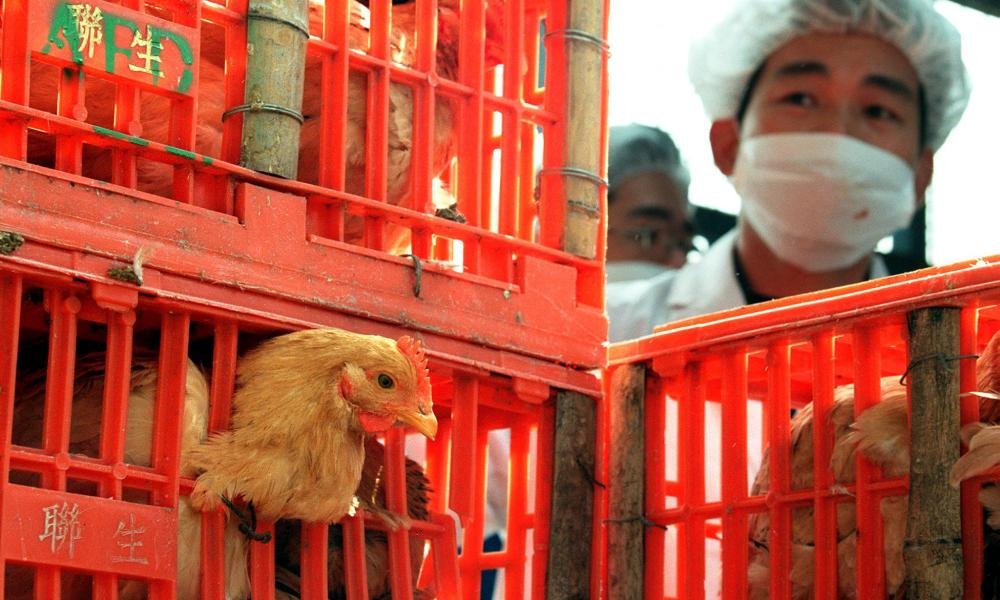
Medical staff from the Ministry of Agriculture, Forestry and Fisheries (AFD), wearing special hygiene equipment, are preparing to take blood samples from the first batch of live chickens arriving from China since the import ban. Poultry were tested for the H5N1 flu, also known as “bird flu,” and six people died in Hong Kong before the remaining 1.5 million chickens were slaughtered in late December.
Nipah virus
When first detected: First detected in humans in 1999
Transmission method: The virus is mainly from pigs, but can be transmitted between humans through intimate contact.
Region: Brought to light in Malaysia, then occurred in Bangladesh and eastern India
Number of Affected People and Animals: The first outbreak killed 105 people and killed nearly 1 million animals.
In 1999, the emergence of this sudden new illness in Malaysia caused a panic. Initially, the death of a person in a small village in Sungainipa was thought to be due to Japanese encephalitis. However, as the villagers fled the village, noticing that the disease was jumping directly from the pigs, the army was finally dispatched to dispose of the abandoned animals. The event inspired the production of the Hollywood movie “Contagion”. The disease passed from bats to pigs and was only a mild illness. However, jumping from infected pigs to humans was relatively easy. In humans, the disease can cause acute respiratory infections and fatal encephalitis, with an estimated case fatality rate of 40-75%.
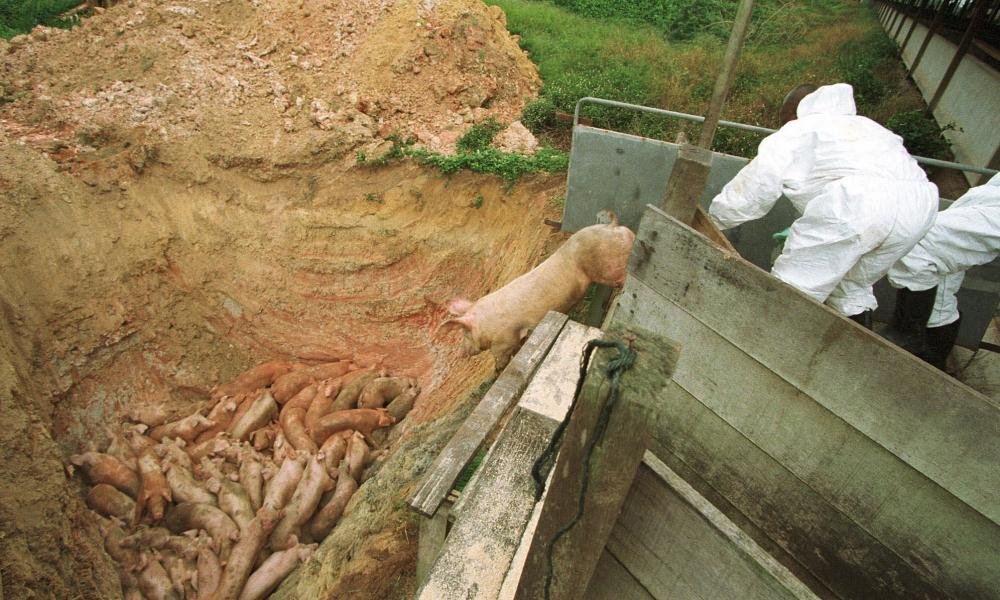
Pig farmers dumped pigs on a large grave in Sungainipa, Malaysia, on Monday, March 22, 1999. Health officials are trying to eliminate more than 300,000 pigs suspected of carrying the Japanese encephalitis virus in order to cut off and contain the infection that could have killed more than 50 people in Malaysia.
Severe Acute Respiratory Syndrome (Thirds)
First detected: First detected in humans in 2002
Method of transmission: Viral, spread by close contact with humans through droplets from coughing or sneezing of infected people. Passed from animals to humans through close contact and consumption of undercooked infected meat in parts of southern China.
Region: First identified in Guangdong Province, southern China
Number of Affected People and Animals: Only about 8500 infected. The case fatality rate was 10-11%, with more than 800 deaths. Thousands of farmed civets have been culled
The first outbreak of SARS was an early warning sign of the deadly danger of the coronavirus migrating from animals to humans. It is thought to be transmitted from bats to humans via the intermediate host species masked palm civet. China initially remained silent about the outbreak, but later apologized for the delayed report. Scientists tracked the virus and found that it was the horseshoe-shaped bat that finally passed the virus to the palm civet that was sold and cultivated in the Chinese market. The virus spread around the world, but the government took swift action and was declared to have contained the epidemic by July 2003.

At an anti-SARS seminar held in Guangzhou on September 12, 2003, a Chinese scholar speaks next to an illustration of the late Chinese leader Mao Tse-tung wearing a mask.
H7N7 – Bird Flu
When first detected: First detected in humans in 2003
Infection method: Direct or indirect contact with infected live or dead poultry. Infected birds shed the avian influenza virus from saliva, mucus, and feces. The World Health Organization (WHO) believes that there may have been a person-to-person transmission.
Region: Netherlands, but later occurred elsewhere
Number of Affected People and Animals: As many as 2,000 people can be infected, and human-to-human transmission is much larger. In the Netherlands alone, the infection spread to more than 250 poultry farms, killing a quarter (30 million) of the country’s poultry herds.
H7N7 is another example of a highly pathogenic avian influenza virus infecting humans. In late February 2003, poultry workers began to get sick in the eastern province of Gelderland. In April, a 57-year-old veterinarian who attended one of the affected farms became ill and died of acute respiratory distress . H7N7 regularly appears in birds in other countries such as the United Kingdom, China and Spain.
Outbreaks of highly pathogenic avian influenza are usually associated with intensive poultry production.

After a bird flu outbreak in the Deurne area on April 21, 2003, members of a Dutch veterinary team are looking for chickens contaminated with bird flu and collecting DNA samples on the farm.
H1N1 – Swine flu
First Detected: First Detected in Humans in 2009
Infection method: Viral, levitating, spread among humans via infected droplets from coughing and sneezing. The initial method of transmission of the H1N1 virus was transferred from animals to humans through close contact with infected meat at slaughterhouses and the like.
Region: United States
Number of Affected People and Animals: Global Deaths Between 151,700 and 575,000
When swine flu was confirmed in humans in California in April 2009, the infection progressed rapidly. By April 24, the US Centers for Disease Control and Prevention had uploaded the viral gene sequences to the Internet, and by early May the school had been closed. In June, WHO declared a pandemic. The disease, which appears to have made a leap to humans in Mexico, quickly spread around the world. The majority of deaths occur in Southeast Asia and Africa. Studies suggest that the outbreak of the virus was facilitated by the live export trade of pigs between the United States and Mexico before it eventually infected humans .

The pig stands in the enclosure of Francis Gilmore Farm near Perry, Iowa, on Tuesday, April 28, 2009.
Middle East Respiratory Syndrome (Mars)
When first detected: First detected in humans in 2012
Methods of transmission: Viral, spread between humans through direct or indirect contact with infected animals, and through infected droplets such as coughing and sneezing.
Region: First case spread to Saudi Arabia, now in at least 27 countries including the United Kingdom
Number of affected people and animals: Over 2,400 deaths, at least 912 deaths
After the death of a patient being treated in Saudi Arabia, Dr. Ali Mohammed Zaki identified Mars and warned the world. Zaki claims he is a whistleblower who was effectively forced to flee to Egypt, but Saudi officials took appropriate emergency action to address the outbreak shortly after the warning was issued. I insist that I took it. The emergence of this disease has been associated with a rapid increase in the Saudi camel population, which has been bred primarily for meat and milk since the 1960s. The case fatality rate of Mars is 35% .
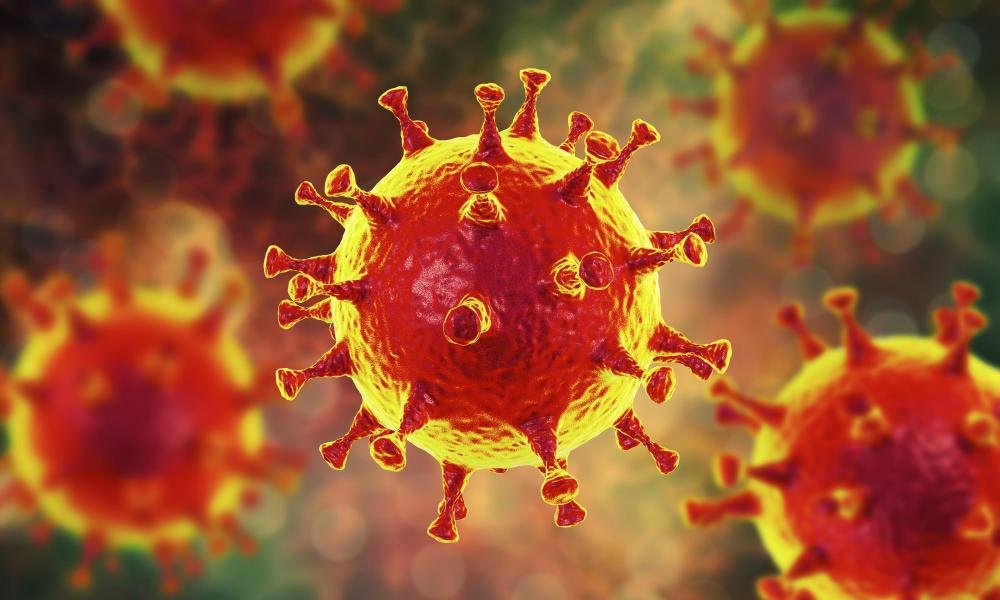
Middle East Respiratory Syndrome Coronavirus (MERS-CoV) Particles (Virion), Computer Illustration



